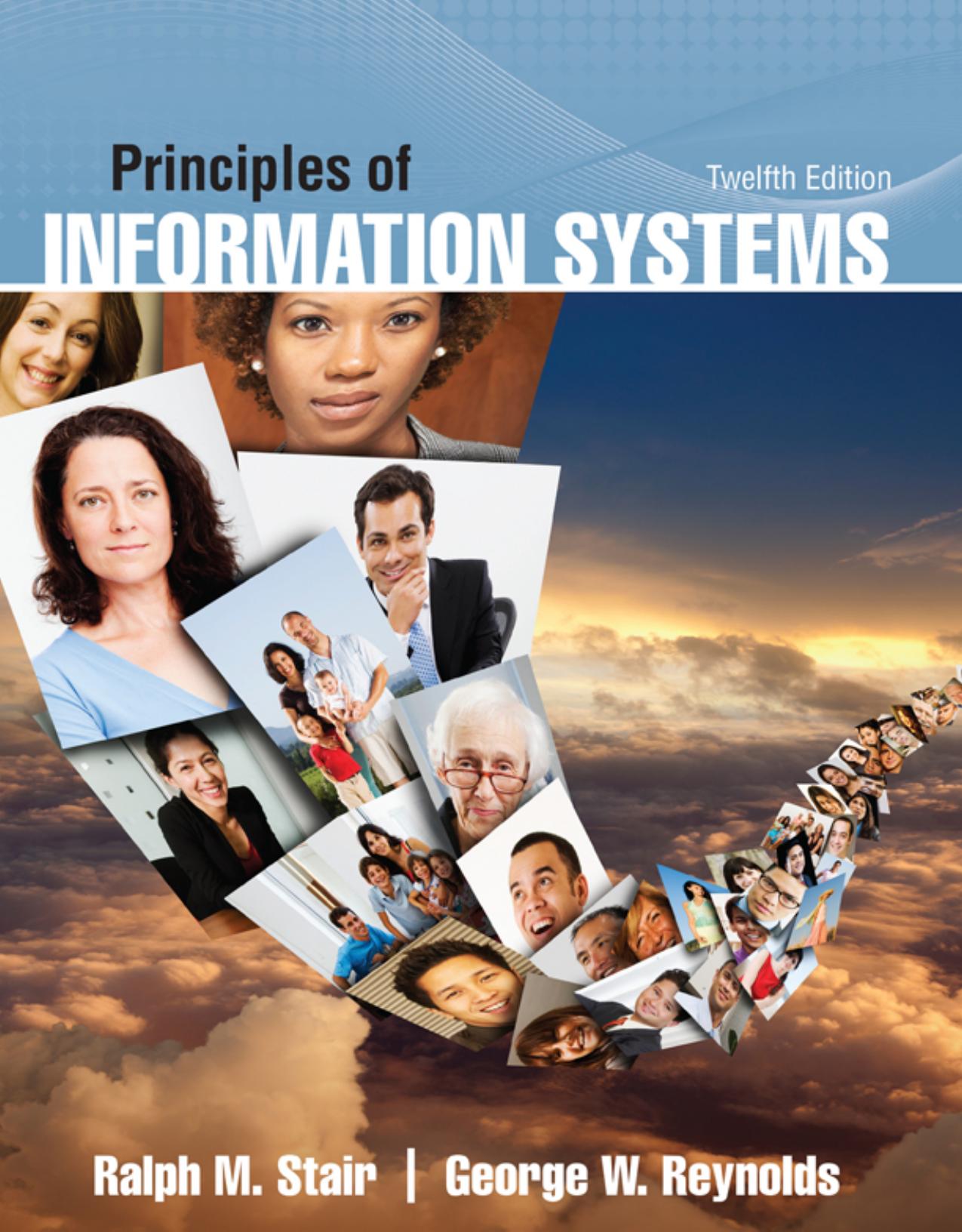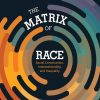Principles of Information Systems 12th Edition by Ralph Stair
$70.00 Original price was: $70.00.$35.00Current price is: $35.00.
Instant download Principles of Information Systems 12th Edition by Ralph Stair after payment
Principles of Information Systems 12th Edition by Ralph Stair, George Reynolds – Ebook PDF Instand Download/DeliveryISBN: 9798214351131
Full dowload Principles of Information Systems 12th Edition after payment

Product details:
ISBN-13 : 9798214351131
Author: Ralph Stair, George Reynolds
Equipping you with a solid understanding of the core principles of IS and how it is practiced, PRINCIPLES OF INFORMATION SYSTEMS, 12E covers the latest research and developments from the field and their impact on the rapidly changing role of today’s IS professional. The book includes expansive coverage of mobile solutions, energy and environmental concerns, cloud computing, IS careers, virtual teams, global IS work solutions, and social networking. You learn firsthand how information systems can increase profits and reduce costs as you explore new information on e-commerce and enterprise systems, artificial intelligence, virtual reality, big data and business intelligence, green computing, and other issues reshaping the industry. The book also introduces the challenges and risks of computer crimes, hacking, and cyberterrorism. No matter where your career path may lead, PRINCIPLES OF INFORMATION SYSTEMS, 12E can help you maximize your success as an employee, a decision maker, and a business leader.
Principles of Information Systems 12th Table of contents:
Part 1. Overview
Chapter 1. An Introduction to Information Systems
Information Concepts
Data, Information, and Knowledge
The Value of Information
Characteristics of Quality Information
System Concepts
What Is an Information System?
Input
Processing
Output
Feedback
Computer-Based Information Systems
Business Information Systems
Electronic and Mobile Commerce
Enterprise Systems: Transaction Processing Systems and Enterprise Resource Planning
Information and Decision Support Systems
Specialized Business Information Systems: Knowledge Management, Artificial Intelligence, Expert Systems, and Virtual Reality
Systems Development
Investigation, Analysis, and Design
Construction, Integration and Testing, Implementation, Operation and Maintenance, and Disposition
Information Systems in Business and Society
Security, Privacy, and Ethical Issues in Information Systems and the Internet
Computer and Information Systems Literacy
Information Systems in Business
Global Challenges in Information Systems
Summary.
Key Terms
Chapter 1: Self-Assessment Test
Review Questions
Discussion Questions
Problem-Solving Exercises
Team Activities
Web Exercises
Career Exercises
Case Studies
Notes
Part 1. Overview
Chapter 1. An Introduction to Information Systems
Information Concepts
Data, Information, and Knowledge
The Value of Information
Characteristics of Quality Information
System Concepts
What Is an Information System?
Input
Processing
Output
Feedback
Computer-Based Information Systems
Business Information Systems
Electronic and Mobile Commerce
Enterprise Systems: Transaction Processing Systems and Enterprise Resource Planning
Information and Decision Support Systems
Specialized Business Information Systems: Knowledge Management, Artificial Intelligence, Expert Systems, and Virtual Reality
Systems Development
Investigation, Analysis, and Design
Construction, Integration and Testing, Implementation, Operation and Maintenance, and Disposition
Information Systems in Business and Society
Security, Privacy, and Ethical Issues in Information Systems and the Internet
Computer and Information Systems Literacy
Information Systems in Business
Global Challenges in Information Systems
Summary.
Key Terms
Chapter 1: Self-Assessment Test
Review Questions
Discussion Questions
Problem-Solving Exercises
Team Activities
Web Exercises
Career Exercises
Case Studies
Notes
Chapter 2. Information Systems in Organizations
Organizations and Information Systems
Organizational Structures
Innovation
Reengineering and Continuous Improvement
Organizational Culture and Change
User Satisfaction and Technology Acceptance
Diffusion of Innovation Theory
Quality
Outsourcing, Offshoring, and Downsizing
Competitive Advantage
Factors That Lead Firms to Seek Competitive Advantage
Strategic Planning for Competitive Advantage
Financial Evaluation of Information System Projects
Payback Period
Internal Rate of Return
Net Present Value Method
Careers in Information Systems
Roles, Functions, and Careers in IS
Typical IS Titles and Functions
Other IS Careers
Working in Teams
Finding a Job in IS
Summary.
Key Terms
Chapter 2: Self-Assessment Test
Review Questions
Discussion Questions
Problem-Solving Exercises
Team Activities
Web Exercises
Career Exercises
Case Studies
Notes
Part 2. Information Technology Concepts
Chapter 3. Hardware: Input, Processing, Output, and Storage Devices
Computer Systems: Integrating the Power of Technology
Hardware Components
Hardware Components in Action
Processing and Memory Devices: Power, Speed, and Capacity
Processing Characteristics and Functions
Memory Characteristics and Functions
Multiprocessing
Parallel Computing
Secondary Storage
Access Methods
Secondary Storage Devices
Enterprise Storage Options
Input and Output Devices: The Gateway to Computer Systems
Characteristics and Functionality
Input Devices
Output Devices
Computer System Types
Portable Computers
Nonportable Single-User Computers
Multiple-User Computer Systems
Data Centers
Green Computing
Summary.
Key Terms
Chapter 3: Self-Assessment Test
Review Questions
Discussion Questions
Problem-Solving Exercises
Team Activities
Web Exercises
Career Exercises
Case Studies
Notes
Chapter 4. Software: Systems and Application Software
An Overview of Software
Systems Software
Application Software
Supporting Individual, Group, and Organizational Goals
Systems Software
Operating Systems
Current Operating Systems
Workgroup Operating Systems
Enterprise Operating Systems
Mobile Operating Systems
Embedded Operating Systems
Utility Programs
Middleware
Application Software
Overview of Application Software
Personal Application Software
Mobile Application Software
Workgroup Application Software
Enterprise Application Software
Application Software for Information, Decision Support, and Competitive Advantage
Programming Languages
The Evolution of Programming Languages
Visual, Object-Oriented, and Artificial Intelligence Languages
Software Issues and Trends
Software Bugs
Copyrights and Licenses
Freeware and Open-Source Software
Software Upgrades
Global Software Support
Summary.
Key Terms
Chapter 4: Self-Assessment Test
Review Questions
Discussion Questions
Problem-Solving Exercises
Team Activities
Web Exercises
Career Exercises
Case Studies
Notes
Chapter 5. Database Systems and Applications
Data Management
Hierarchy of Data
Data Entities, Attributes, and Keys
The Database Approach
Data Modeling and Database Characteristics
Data Modeling
Relational Database Model
Data Cleansing
Database Management Systems
Overview of Database Types
SQL Databases
NoSQL Databases
Visual, Audio, and Other Database Systems
Database Activities
Database Administration
Popular Database Management Systems
Using Databases with Other Software
Database Applications
Big Data
Data Warehouses and Data Marts
Business Intelligence
Summary.
Key Terms
Chapter 5: Self-Assessment Test
Review Questions
Discussion Questions
Problem-Solving Exercises
Team Activities
Web Exercises
Career Exercises
Case Studies
Notes
Chapter 6. Telecommunications and Networks
An Overview of Telecommunications
Basic Telecommunications Channel Characteristics
Short-Range Wireless Options
Medium-Range Wireless Options
Wide Area Wireless Network Types
Growth in Wireless Data Traffic
Networks and Distributed Processing
Network Topology
Network Types
Basic Processing Alternatives
Client/Server Systems
Telecommunications Hardware
Telecommunications Software
Securing Data Transmission
Virtual Private Network (VPN)
Telecommunications Services and Network Applications
Cellular Phone Services
Linking Personal Computers to Mainframes and Networks
Voice Mail
Home and Small Business Networks
Electronic Document Distribution
Call Centers
Telecommuting and Virtual Workers and Workgroups
Electronic Meetings
Electronic Data Interchange
Unified Communications
Quick Response Codes
Global Positioning System Applications
Summary.
Key Terms
Chapter 6: Self-Assessment Test
Review Questions
Discussion Questions
Problem-Solving Exercises
Team Activities
Web Exercises
Career Exercises
Case Studies
Notes
Chapter 7. The Internet, Web, Intranets, and Extranets
Use and Functioning of the Internet
How the Internet Works
Accessing the Internet
Cloud Computing
The World Wide Web
How the Web Works
Web Programming Languages
Web Services
Developing Web Content and Applications
Internet and Web Applications
Web 2.0 and the Social Web
Online Information Sources
Search Engines and Web Research
Web Portals
Blogging and Podcasting
Online Media and Entertainment
Shopping Online
Travel, Geolocation, and Navigation
Internet Utilities
Intranets and Extranets
Internet Issues
Summary.
Key Terms
Chapter 7: Self-Assessment Test
Review Questions
Discussion Questions
Problem-Solving Exercises
Team Activities
Web Exercises
Career Exercises
Case Studies
Notes
Part 3. Business Information Systems
Chapter 8. Electronic and Mobile Commerce
An Introduction to Electronic Commerce
Business-to-Business E-Commerce
Business-to-Consumer E-Commerce
Consumer-to-Consumer E-Commerce
E-Government
Introduction to Mobile Commerce
Mobile Commerce in Perspective
M-Commerce Web Sites
Advantages of Electronic and Mobile Commerce
Multistage Model for E-Commerce
E-Commerce Challenges
Dealing with Consumer Privacy Concerns
Overcoming Consumers’ Lack of Trust
Overcoming Global Issues
Electronic and Mobile Commerce Applications
Retail and Wholesale
Manufacturing
Marketing
Advertising
Bartering
Investment and Finance
Banking
E-Boutiques
Strategies for Successful E-Commerce and M-Commerce
Defining an Effective E-Commerce Model and Strategy
Defining the Web Site Functions
Establishing a Web Site
Building Traffic to Your Web Site
Maintaining and Improving Your Web Site
Technology Infrastructure Required to Support E-Commerce and M-Commerce
Hardware
Web Server Software
E-Commerce Software
Mobile Commerce Hardware and Software
Electronic Payment Systems
Summary.
Key Terms
Chapter 8: Self-Assessment Test
Review Questions.
Discussion Questions.
Problem-Solving Exercises.
Team Activities.
Web Exercises.
Career Exercises.
Case Studies
Notes
Chapter 9. Enterprise Systems
Transaction Processing Systems
Traditional Transaction Processing Methods and Objectives
Transaction Processing Systems for Entrepreneurs and Small and Medium-Sized Enterprises
Transaction Processing Activities
Data Collection
Data Editing
Data Correction
Data Processing
Data Storage
Document Production
Enterprise Systems
Enterprise Resource Planning
Advantages of ERP
Leading ERP Systems
Supply Chain Management (SCM)
Customer Relationship Management
Product Lifecycle Management (PLM)
Overcoming Challenges in Implementing Enterprise Systems
Hosted Software Model for Enterprise Software
Summary.
Key Terms
Chapter 9: Self-Assessment Test
Review Questions
Discussion Questions
Problem-Solving Exercises
Team Activities
Web Exercises
Career Exercises
Case Studies
Notes
Chapter 10. Information and Decision Support Systems
Decision Making and Problem Solving
Decision Making as a Component of Problem Solving
Programmed versus Nonprogrammed Decisions
Structured, Semistructured, and Unstructured Decisions
Optimization, Satisficing, and Heuristic Approaches
Benefits of Information and Decision Support Systems
An Overview of Management Information Systems
Management Information Systems in Perspective
Inputs to a Management Information System
Outputs of a Management Information System
Characteristics of a Management Information System
Functional Aspects of the MIS
Financial Management Information Systems
Manufacturing Management Information Systems
Marketing Management Information Systems
Human Resource Management Information Systems
Other Management Information Systems
An Overview of Decision Support Systems
Characteristics of a Decision Support System
Capabilities of a Decision Support System
A Comparison of DSS and MIS
Components of a Decision Support System
The Database
The Model Base
The User Interface, or Dialogue Manager
Group Decision Support Systems
Characteristics of a GSS That Enhance Decision Making
GSS Hardware and Software Tools
GSS Alternatives
Summary.
Key Terms
Chapter 10: Self-Assessment Test
Review Questions
Discussion Questions
Problem-Solving Exercises
Team Activities
Web Exercises
Career Exercises
Case Studies
Notes
Chapter 11. Knowledge Management and Specialized Information Systems
Knowledge Management Systems
Overview of Knowledge Management Systems
Data and Knowledge Management Workers and Communities of Practice
Obtaining, Storing, Sharing, and Using Knowledge
Technology to Support Knowledge Management
Overview of Artificial Intelligence
Artificial Intelligence in Perspective
Nature of Intelligence
Brain Computer Interface
Major Branches of Artificial Intelligence
Expert Systems
Robotics
Vision Systems
Natural Language Processing and Voice Recognition
Learning Systems
Neural Networks
Other Artificial Intelligence Applications
Overview of Expert Systems
Components of Expert Systems
Inference Engine
Explanation Facility
Knowledge Acquisition Facility
User Interface
Participants in Developing and Using Expert Systems
Expert Systems Development Tools and Techniques
Multimedia and Virtual Reality
Overview of Multimedia
Overview of Virtual Reality
Interface Devices
Forms of Virtual Reality
Virtual Reality Applications
Other Specialized Systems
Assistive Technology Systems
Summary
Key Terms
Chapter 11: Self-Assessment Test
Review Questions
Discussion Questions
Problem-Solving Exercises
Team Activities
Web Exercises
Career Exercises
Case Studies
Notes
Part 4. Systems Development
Chapter 12. Systems Development: Investigation, Analysis, and Design
An Overview of Systems Development
Participants in Systems Development
Information Systems Planning
Traditional Systems Development Life Cycle
Systems Investigation
Review Systems Investigation Request
Identify and Recruit Team Leader and Team Members
Develop Budget and Schedule for Investigation
Perform Investigation
Perform Preliminary Feasibility Analysis
Prepare Draft of Investigation Report
Review Results of Investigation with Steering Team
Systems Analysis
Identify and Recruit Team Leader and Team Members
Develop Budget and Schedule for Systems Analysis Activities
Study Existing System
Develop Prioritized Set of Requirements
Perform Preliminary Make-versus-Buy Analysis
Identify and Evaluate Alternative Solutions
Perform Feasibility Analysis
Prepare Draft of Systems Analysis Report
Review Results of Systems Analysis with Steering Team
Systems Design
Identify and Recruit Team Leader and Team Members
Develop Schedule and Budget for Systems Design Activities
Design User Interface
Design System Security and Controls
Design Disaster Recovery Plan
Design Database
Perform Feasibility Analysis
Prepare Draft of Systems Design Report
Review Results of Systems Design with Steering Team
Finalize Contract
Summary.
Key Terms
Chapter 12: Self-Assessment Test
Review Questions
Discussion Questions
Problem-Solving Exercises
Team Activities
Web Exercises
Career Exercises
Case Studies
Notes
Chapter 13. Systems Development: Construction, Integration and Testing, Implementation, Operation and Maintenance, and Disposal
Traditional Systems Development Life Cycle—Continued
Construction
Acquire and Install Hardware
Acquire and Install Software
Code Software Components
Create and Load Data
Perform Unit Testing
Integration and Testing
Integration Testing
System Testing
Volume Testing
User Acceptance Testing
Implementation
User Preparation
Site Preparation
Installation
Cutover
Systems Operation and Maintenance
Operation
Maintenance
Disposal
Alternate Systems Development Life Cycles and Approaches
Prototyping
Agile Development
Object-Oriented Systems Development
Mobile Application Development
User Systems Development
Tips to Avoid Project Failure
Executives Fail to Provide Leadership and Direction
Project Scope Is Unclear or Not Managed
Expectations Are Poorly Managed
Insufficient User Involvement
Organization Not Prepared for Change
Poor Planning
Summary.
Key Terms
Chapter 13: Self-Assessment Test
Review Questions
Discussion Questions
Problem-Solving Exercises
Team Activities
Web Exercises
Career Exercises
Case Studies
Notes
Part 5. Information Systems in Business and Society
Chapter 14. The Personal and Social Impact of Computers
Computer Waste and Mistakes
Computer Waste
Computer-Related Mistakes
Preventing Computer-Related Waste and Mistakes
Establishing Policies and Procedures
Implementing Policies and Procedures
Monitoring Policies and Procedures
Reviewing Policies and Procedures
Computer Crime
The Computer as a Tool to Commit Crime
Cyberterrorism
Identity Theft
Computer Theft
The Computer as a Tool to Fight Crime
Recovery of Stolen Property
Monitoring Criminals
Assessing Crime Risk for a Given Area
The Computer as the Object of Crime
Illegal Access and Use
Spyware
Information and Equipment Theft
Patent and Copyright Violations
Computer-Related Scams
International Computer Crime
Preventing Computer-Related Crime
Crime Prevention by State and Federal Agencies
Crime Prevention by Organizations
Crime Prevention for Individuals and Employees
Privacy Issues
Privacy and the Federal Government
Privacy at Work
Privacy and Email
Privacy and Instant Messaging
Privacy and Personal Sensing Devices
Privacy and the Internet
Privacy and Internet Libel Concerns
Privacy and Fairness in Information Use
Privacy and Filtering and Classifying Internet Content
Individual Efforts to Protect Privacy
Work Environment
Health Concerns
Avoiding Health and Environmental Problems
Ethical Issues in Information Systems
Summary
Key Terms
Chapter 14: Self-Assessment Test
Review Questions
Discussion Questions
Problem-Solving Exercises
Team Activities
Web Exercises
Career Exercises
Organizations and Information Systems
Organizational Structures
Innovation
Reengineering and Continuous Improvement
Organizational Culture and Change
User Satisfaction and Technology Acceptance
Diffusion of Innovation Theory
Quality
Outsourcing, Offshoring, and Downsizing
Competitive Advantage
Factors That Lead Firms to Seek Competitive Advantage
Strategic Planning for Competitive Advantage
Financial Evaluation of Information System Projects
Payback Period
Internal Rate of Return
Net Present Value Method
Careers in Information Systems
Roles, Functions, and Careers in IS
Typical IS Titles and Functions
Other IS Careers
Working in Teams
Finding a Job in IS
Summary.
Key Terms
Chapter 2: Self-Assessment Test
Review Questions
Discussion Questions
Problem-Solving Exercises
Team Activities
Web Exercises
Career Exercises
Case Studies
Notes
Part 2. Information Technology Concepts
Chapter 3. Hardware: Input, Processing, Output, and Storage Devices
Computer Systems: Integrating the Power of Technology
Hardware Components
Hardware Components in Action
Processing and Memory Devices: Power, Speed, and Capacity
Processing Characteristics and Functions
Memory Characteristics and Functions
Multiprocessing
Parallel Computing
Secondary Storage
Access Methods
Secondary Storage Devices
Enterprise Storage Options
Input and Output Devices: The Gateway to Computer Systems
Characteristics and Functionality
Input Devices
Output Devices
Computer System Types
Portable Computers
Nonportable Single-User Computers
Multiple-User Computer Systems
Data Centers
Green Computing
Summary.
Key Terms
People also search for Principles of Information Systems 12th:
principles of information systems pdf
principles of information systems course
principles of information systems 13th edition
principles of information systems (is) by stair and reynolds
principles of information systems 13th edition pdf


